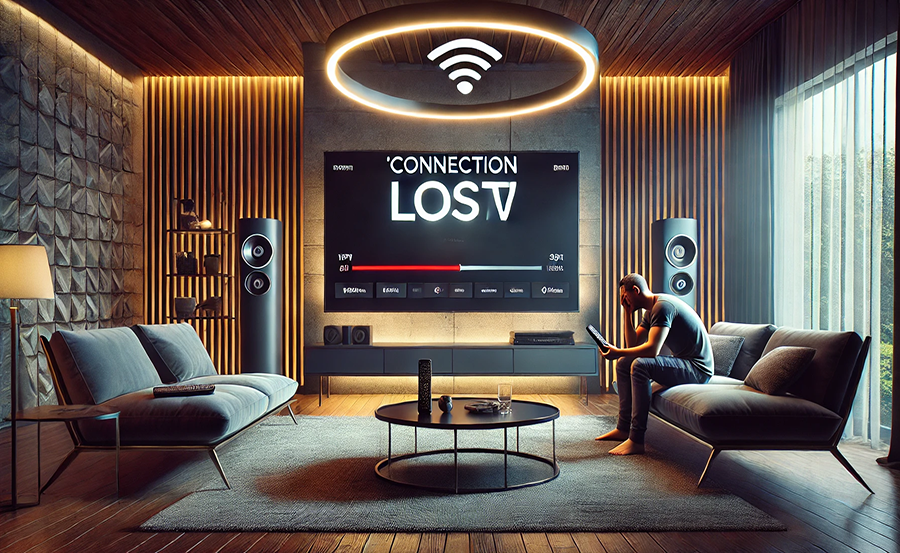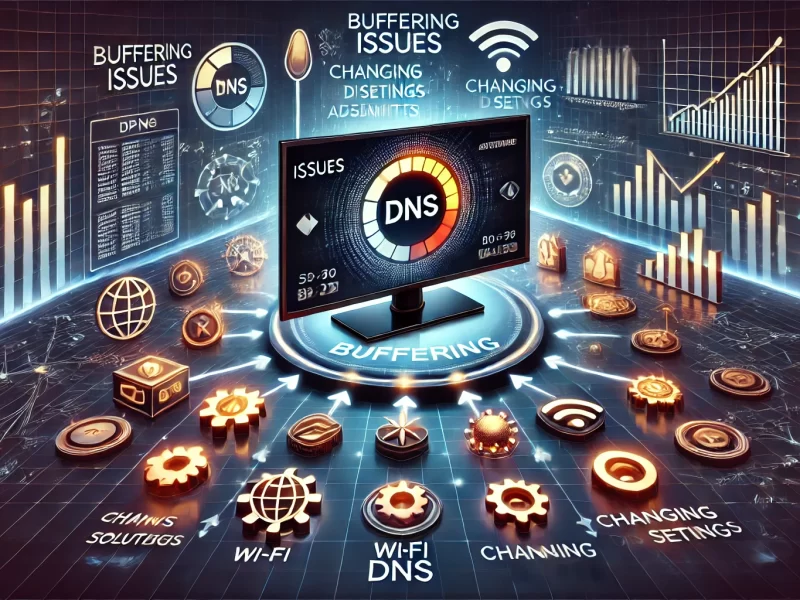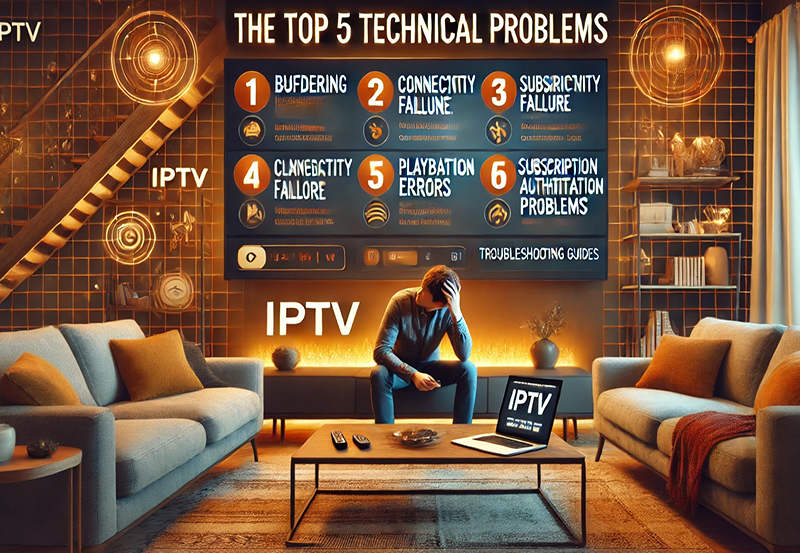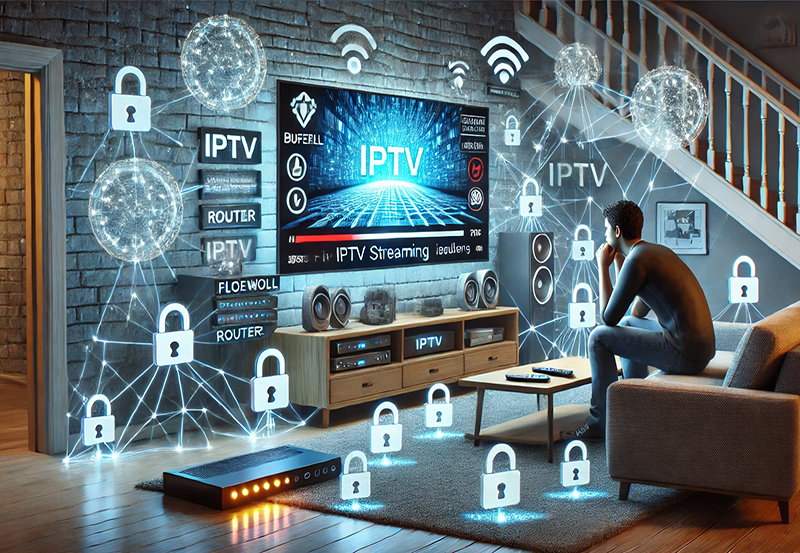Live TV streaming has become a staple in many households, offering flexibility and a wide range of content at users’ fingertips. But while IPTV services can offer unparalleled convenience, they often bring technical challenges that can frustrate even the most tech-savvy users. In this article, we’ll explore the intricate world of fixing IPTV connection failures. We’ll guide you through practical solutions to ensure a seamless streaming experience.
Buy 1 Year IPTV Subscription and Enjoy Unlimited Content
Understanding the Basics of IPTV Technology
Before diving into troubleshooting, it’s crucial to understand what IPTV is and how it functions. IPTV, or Internet Protocol Television, requires a stable internet connection to deliver television content. The nature of this digital service means that various technical issues might arise, interrupting your viewing pleasure.
What Sets IPTV Apart from Traditional TV?
Unlike traditional broadcast TV that relies on signals and cables, IPTV utilizes the internet. Because of this, users can enjoy features like on-demand viewing and recording. But, it’s this reliance on internet connectivity that also makes it vulnerable to disruptions.
The Evolution of IPTV Services
IPTV has evolved significantly since its inception. Initially, it was limited to simple streaming with few functionalities. Today, the landscape is much more complex, offering multi-device compatibility and interactive options, demanding an ever-more stable internet connection to cater to the advanced functionalities.
Common Issues Affecting IPTV on Roku
Roku, a leader in streaming devices, often pairs with IPTV for an optimal viewing experience. However, users frequently encounter distinct issues. Comprehensive understanding and troubleshooting skills can significantly enhance their IPTV experience on Roku.
Buffeting and Lag Problems
Buffering remains a primary issue with IPTV on Roku. This can result from insufficient bandwidth, poor Wi-Fi signal, or an overloaded server. Understanding each potential cause can help identify the most effective solution.
Troubleshooting Buffering Issues
To tackle buffering, first check your internet speed. A speed test can determine if your connection meets the recommended requirements for streaming. Additionally, optimizing your Wi-Fi signal by relocating the router or reducing interference from other devices can make a big difference.
Practical Solutions for IPTV Enjoyment
While occasional technical hiccups are unavoidable, several strategies can mitigate common IPTV issues, ensuring a smoother user experience.
Router Configuration and Optimization
An optimal router setup is key to enjoying IPTV. This involves adjusting settings to prioritize IPTV traffic, thus reducing lag and increasing efficiency.
- Use Quality of Service (QoS) settings to prioritize IPTV streaming over other data.
- Ensure the router’s firmware is up-to-date.
- Reduce the load on your network by controlling the number of connected devices.
Utilizing Ethernet Over Wi-Fi
For a more reliable connection, consider using a wired Ethernet connection instead of Wi-Fi. This can often eliminate issues related to signal interference and strength, providing a more stable experience.
The Expert’s Guide to IPTV Enjoyment
For those seeking an enriched IPTV viewing experience, there are several expert-recommended practices. These go beyond basic troubleshooting, offering advanced solutions to common problems.
Adopting Advanced Streaming Settings
Adjusting streaming settings for resolution and bitrate can help manage data usage and improve performance. Lowering the resolution can result in fewer buffering issues, especially during peak times.
Optimum Settings for Varying Network Conditions
Your network conditions might change, affecting streaming quality. Familiarize yourself with adjusting your device’s settings to quickly switch to less data-intensive streams when necessary.
Preventive Measures to Secure Your IPTV Experience
Aside from real-time troubleshooting, taking preventative measures can significantly reduce future IPTV disruptions.
Regular Device Management Practices
Routine maintenance of your streaming device is imperative. Regular updates, clearing cache, and restarting devices can preemptively solve many issues.
Firmly Establishing Device Prioritization
For a consistent streaming experience, designate your streaming device as a priority within your network settings. This ensures it receives ample bandwidth, even during high traffic times.
Innovative Tools for IPTV Connectivity
Various tools and applications have been developed to aid in optimizing IPTV performance. From network analyzers to streaming optimizer apps, these can be invaluable resources.
Implementing Technology for Network Analysis
Network analyzers can identify weak points in your connection, offering insights into which areas need improvement. By understanding these facets, users can make informed decisions about their streaming environment.
Applications to Enhance Streaming Quality
There are many applications available designed to enhance streaming quality. Some options include software that automatically adjusts your settings for optimal performance or alerts you about network issues before they affect your viewing experience.
Diversifying IPTV Providers and Content
An often-overlooked aspect of a smooth IPTV experience is selecting the right provider and diversifying your content sources.
Choosing the Best IPTV Service
Not all IPTV services are created equal. When selecting a provider, consider factors such as reliability, cost, and the range of available content. Reading online reviews and trialing services may help make the decision easier.
Investing in Multiple Sources
Having multiple sources for your IPTV content can be wise, allowing flexibility and minimizing disruptions if one provider experiences issues. This approach often enriches the content variety and availability.
FAQ on IPTV Connection Failures

Why does my IPTV stream keep buffering?
Buffering can occur due to bandwidth limitations, poor Wi-Fi signal, or server overload. It’s often beneficial to check internet speeds and reduce network traffic.
Can IPTV work on all Roku devices?
Most Roku devices support IPTV, but functionality may vary. It’s crucial to check compatibility and ensure your Roku has the latest updates installed.
What should I do if IPTV keeps disconnecting?
Ensure stable internet connectivity, use Ethernet instead of Wi-Fi, and adjust router settings to prioritize IPTV streaming.
Is it possible to use IPTV effectively during peak hours?
Yes, by adjusting streaming settings to lower resolutions and optimizing network configurations, you can reduce the impact of high traffic.
Which is the best setup for IPTV on Roku?
Utilizing a strong, stable internet connection with adjusted QoS settings and keeping the device updated provides the best setup for using IPTV on Roku.
Do free IPTV services cause more connectivity issues?
Free services are more likely to experience issues due to high user demand on their servers, so premium options might provide more stable service.
Boost IPTV Performance on Apple TV by Configuring Your Router





